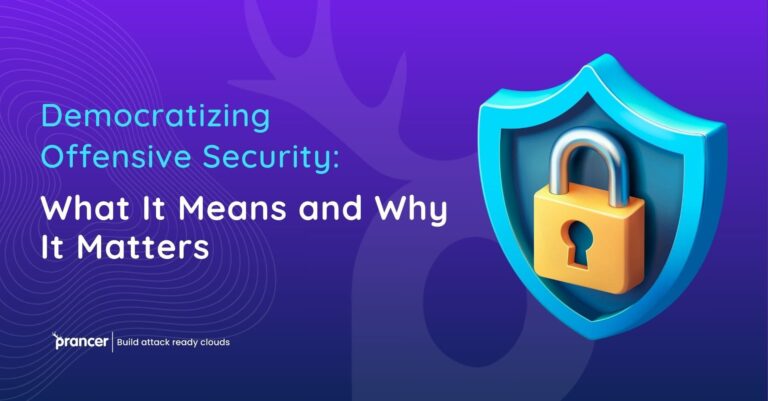

Welcome to our new blog post! We will explore how to use the Prancer platform for doing and organizing scans of Log4j weaknesses. Prancer, a strong security scanning tool, makes it easy to find and control problems like Log4j. This post will show security experts how to use Prancer in the right way for strong vulnerability control. Check this video to see it in action:
This smart blog post talks about how the Prancer system is great for checking and tracing Log4j weaknesses. Today, Prancer uses automatic penetration testing to break into systems. This system watches all the time and acts quickly against threats like Log4j. This will give us information on how security experts can use Prancer for big risk management, and make a strong barrier against these dangers. Lastly, make sure to watch the video demo that comes with it so you can see these powerful features working.
The adventure starts at the Prancer gate. There, you set up your scanner with help from ‘PAC Wizard’. Here’s what you need to do:
Then, choose who or what you want to scan and decide any needed ways of logging in. For this case, we will go on without needing extra proof. This move makes a ‘PAC file’, basically it’s like writing computer code for pentesting. It tells the scanner what to check and how to do it properly.
Once the scan is initiated:
Patience is key as the scan progresses. Upon completion:
In Sentinel, you can further drill down into the results:
In our latest blog post, find out how efficient the Prancer platform is in scanning and managing Log4j vulnerabilities. Prancer is robust in its security scanning capabilities and the detection as well as management of issues such as Log4j are simplified. We help security professionals in leveraging Prancer for comprehensive vulnerability management. In the post, it is presented in a step-by-step manner about how to configure standalone scanners, objectives and authentications; scan integrations with Sentinel for improved tracking and product detailed analyses of results forward.
A Step-by-Step Guide on Using Prancer for Log4j Vulnerability Management
Step 1: Setting Up The Scanner Through The Prancer Portal.
Your journey in mastering the Prancer platform begins with setting up your scanner:
Select the Hosting Environment: Select a correct hosting environment like for instance the Azure
Scanner Configuration: Identify the scanner name, choose a scan type (invasive/non-invasive), and follow the protocols.
Scheduling Options: Choose if the scan is to be repeated or end after one execution.
Placement Settings: Allow the scanner to scan local resources beyond the firewalls, increasing its scope.
Step2: Target Setting and Authentication
Next, focus on target configuration and authentication:
Choosing Targets: Define your penetration test targets. For this practical, we will go ahead without any further authentication requests.
Generating a PAC File: Write a PAC (Prancer Automated Configuration) file, which in effect is a document describing the targets and methodologies to be used during penetration testing.
Step3: Integration with Sentinel
Upon initiating the scan, integrate with Sentinel:
Navigate to the Inventory Management Page: Choose your scan settings from the menu.
Third-Party Integration: Choose a Sentinel from the list of available integration options.
Connector File and Workspace: Indicate your scan’s connector file and the Sentinel workspace that will display its own results.
Step4: Monitoring and Analyzing the Scan
While the scan is underway, monitoring and analysis are crucial:
Review Latest Findings: Identify the Log4j vulnerabilities that were detected in our case.
Prancer Portal Review: Study the comprehensive reports within the Prancer Portal.
Observations in Sentinel: In Sentinel, track the alerts and events created by the scans.
Step5: Detailed Analysis in Sentinel
For an in-depth analysis:
Focus on Severity and Vulnerability: For instance, sort the detected Log4j vulnerabilities.
Endpoint Selection: For a thorough analysis of the vulnerability, select an endpoint.
Automated Penetration Testing: Prancer’s Capabilities In Depth
Prancer’s automated penetration testing is pivotal in identifying potential weaknesses, such as:
… and more.
Closing Thoughts: The Power of Prancer for Log4j Vulnerability Management is immense.
This blog, combined with our video guide is meant to offer a step-by-step approach towards Prancer harnessing its capabilities for efficient vulnerability management while focusing on Log4j. Through such measures, security professionals are able to ensure that their digital assets remain safe from the ever-changing terrain of cyber threats since automated penetration tests primarily act as an efficient means used in identifying and addressing vulnerabilities preemptively.
There is more to come in attaining the best cybersecurity posture with advanced tools such as Prancer. Delve into our blog series to know more about how automation penetration testing can truly transform the way you think of digital security.
This process shows how easy and fast it is to use Prancer for scanning Log4j weaknesses and managing them. Each step is made to give a complete look at your security situation. It starts from the first setup and goes all the way through deep study in Sentinel.
For people who really want to learn this method, extra help and video lessons can be found in the Prancer series. Keep listening for more tips and plans to improve your security tools with Prancer.
Enjoy your searches, and remember that always learning is needed to stay ahead in internet safety!
